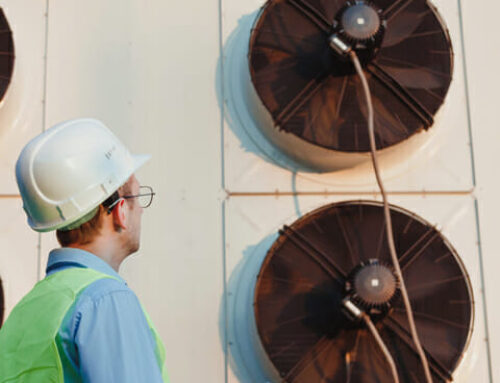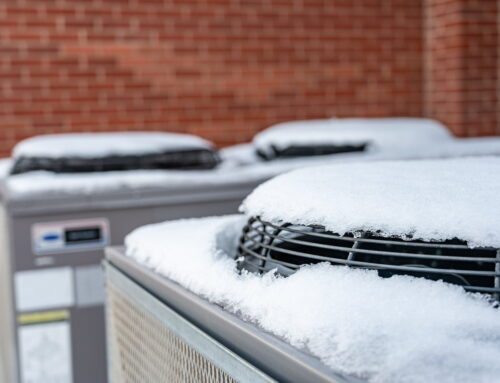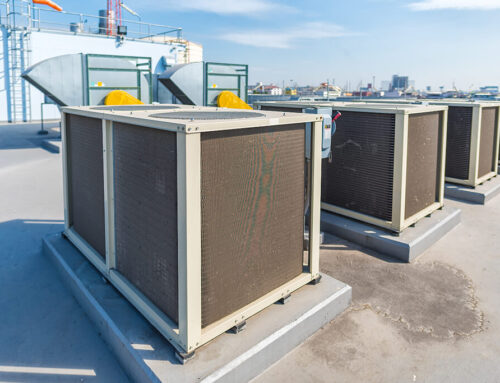Ever wondered how fresh air circulates in buildings through mechanical ventilation systems, maintaining airflow direction, and background ventilation design, keeping spaces healthy and comfortable at proper ventilation rates? That’s the magic of a well-thought-out ventilation system design, incorporating air flow, air ducts, airflow direction, and air exchange efficiency. Merging science with architecture and construction, these systems are not just about moving air in and out through windows; they’re about creating environments with background ventilation design and controlled airflow direction where you can thrive. Whether it’s your home or workplace, the right setup with proper air flow and clean air ducts ensures that every breath is a gulp of freshness from room air mixed with outdoor air. In today’s world, efficient ventilation with optimal air exchange efficiency, well-designed air ducts, and controlled airflow direction isn’t just nice to have—it’s essential for wellbeing and ensuring outdoor air quality indoors. Let’s dive into what makes an effective mechanical ventilation system tick, how windows can transform your space, and their impact on building performance and air exchange efficiency.
Understanding Ventilation Types and Applications
Natural Ventilation
Natural ventilation uses external wind and temperature differences to move air horizontally through buildings, utilizing windows and creating negative pressure. It’s the simplest form, requiring no mechanical systems. Windows, vents, and openings facilitate this airflow.
Homes often use natural methods for fresh air. A breeze through open windows can reduce indoor pollutants. Yet, outdoor air through mechanical ventilation systems is less controllable than other types and may not suit all climates or pollution levels, and the air duct design must consider the exterior conditions.
Mechanical Ventilation
Mechanical systems use fans and ducts to control airflow. This type is more predictable than natural ventilation. It ensures adequate air exchange through mechanical ventilation systems even without favorable exterior conditions, maintaining background ventilation and negative pressure.
These systems are essential in areas with extreme weather or high-rise buildings where natural methods like opening windows for background ventilation aren’t effective. Mechanical ventilation systems can filter out pollutants, providing consistent indoor air quality (IAQ) and maintaining negative pressure in the building background.
Hybrid Ventilation
Hybrid ventilation combines both methods for efficiency gains. When conditions allow, the building relies on natural ventilation; otherwise, it switches to mechanical means to supply air or create negative pressure.
This approach optimizes energy consumption while maintaining good IAQ. Many modern office buildings adopt hybrid design solutions, including mechanical ventilation systems, for their adaptability and sustainability benefits.
Spot vs Whole-Building
Spot ventilation targets specific areas like kitchens or bathrooms where moisture or odors accumulate quickly, using air ducts to supply air and maintain pressure.
-
Extractor fans over stoves.
-
Bathroom exhausts remove excess humidity promptly.
Whole-building ventilation systems maintain overall IAQ by exchanging air throughout the entire structure under controlled pressure.
-
These include HVAC units and mechanical ventilation systems that condition, circulate, and maintain pressure in the air in all rooms simultaneously.
The choice between spot and whole-building mechanical ventilation systems depends on building size, usage patterns, pressure, supply air, and specific needs like allergen reduction or odor control.
Occupant health greatly benefits from proper ventilation design by reducing mold growth risk due to excess moisture removal as well as diluting airborne contaminants such as dust mites or volatile organic compounds (VOCs). Moreover, efficient designs, including mechanical ventilation systems, contribute to building sustainability by minimizing energy demands for heating or cooling and supplying fresh air to indoor spaces—critical in today’s energy-conscious world.
Assessing Ventilation Needs and Airflow Requirements
Room Dimensions
Room size, how it’s used, and supply air are key to ventilation. Small rooms need less air than large spaces. A living room may require more airflow and ventilation compared to a storage area.
In offices, air quantity and ventilation are vital for comfort and health. Large conference rooms demand high air exchange rates and ventilation due to frequent use and occupancy.
Occupancy Levels
How many people use the space affects ventilation needs. More occupants mean more carbon dioxide, heat, and pollutants.
Classrooms or care facilities with lots of people need ventilation systems that can handle increased air velocity. This ensures everyone breathes easily.
Building Codes
Local codes dictate minimum ventilation standards. They ensure safety and comfort in buildings.
For new constructions or renovations, getting prior approval for your ventilation system and supply air design is crucial. It must meet or exceed these requirements.
Calculating Heat and Cooling Loads for Effective Ventilation
Climate Factors
After assessing ventilation needs and airflow requirements, it’s crucial to calculate heat and cooling loads. External climate factors and supply air ventilation play a significant role in influencing these loads. For instance, the intensity of sunlight, outside air temperature, wind speed, humidity, and ventilation all affect how much heat enters or leaves a building.
By considering these variables, such as supply air and ventilation, you can estimate the heat load more accurately. This ensures that your supply air ventilation system operates efficiently throughout different seasons.
Internal Gains
In addition to external influences, internal sources and ventilation supply air contribute to overall heat gains. Occupants generate body heat simply by being present. Electronic devices like computers or machinery also emit warmth during operation, requiring adequate ventilation and supply air.
It is essential to include this internal heat when sizing your ventilation components, including supply air. The right calculation prevents ventilation systems from being overworked or underperforming in supplying air.
Load Calculations
Properly utilizing load calculations allows for precise sizing of ventilation components, including supply air systems. It involves determining the heat loss coefficient, which reflects how quickly a building loses heat through its envelope and ventilation system.
Calculators take into account the change rate of indoor air temperature against outdoor conditions and ventilation. This helps design a system that maintains comfort without wasting energy on unnecessary heating, cooling, or ventilation.
To summarize:
-
Account for both external climate and internal factors.
-
Use detailed calculations based on specific data points.
These steps ensure effective background ventilation in any setting.
Components Selection for Optimal Indoor Air Quality
Filter Efficiency
Filters play a crucial role in maintaining indoor air quality through proper ventilation. Selecting the right filter means considering how well it can remove particles from the air. High-efficiency filters capture more contaminants, improving ventilation and the health of room occupants.
Choose filters that match your needs for particulate removal. For instance, a washable filter might be suitable for areas with less dust. In contrast, higher-grade filters with improved ventilation are better for spaces needing cleaner air, like hospitals or homes with allergy sufferers.
Space Constraints
Air handling units (AHUs) must fit within specific areas while achieving air quality and ventilation goals. It’s important to select AHUs that not only fit into designated spaces but also provide sufficient airflow, ventilation, and contaminant control.
For buildings with limited space, compact AHUs with ventilation can be installed on an exterior wall or above ceilings. These ventilation units should still meet targets for removing airborne contaminants effectively.
Performance Prioritization
When designing ventilation systems, prioritize components known to reduce pollutants efficiently. This ensures healthier indoor environments with proper ventilation and meets regulatory standards where applicable.
Components such as intake grilles and background exhaust systems contribute to overall ventilation performance by managing outdoor air flow and indoor pollutant levels respectively. In isolation rooms or airborne infection isolation rooms particularly, ventilation is critical to maintain safety standards.
Energy Efficiency in Ventilation Systems
Recovery Systems
Ventilation systems are key for fresh air. But they can waste energy. Energy recovery ventilators (ERVs) help a lot. They capture energy from exhaust air in ventilation systems and use it to condition incoming air. This means less work for heaters, coolers, and ventilation systems, reducing the building’s overall energy needs.
Installing an ERV is smart construction practice today. It helps with both energy savings and maintaining good indoor air quality after selecting optimal ventilation components.
Efficient Motors
Choosing the right parts saves power too. High-efficiency motors and fans, designed for improved ventilation, use less electricity than standard ones, which lowers bills over time.
For example, a high-quality exhaust riser fan with an efficient motor will have lower operating costs compared to traditional ventilation models. It’s not just about initial cost but long-term performance and ventilation in your mechanical system design.
Smart Ventilation
Not all spaces need constant airflow. Demand-controlled ventilation adjusts based on how many people are there using sensors like occupancy detectors.
This way, when a room is empty or has fewer people, the ventilation system reduces airflow automatically saving energy without compromising comfort or safety.
-
Lowered ventilation rates during low occupancy save money.
-
Sensors ensure adequate positive pressure when needed.
Implementing these features requires careful planning but leads to significant gains in efficiency for any ventilation system design.
Noise Control and Compliance in Ventilation Design
Duct Layout
Ductwork is crucial for a quiet ventilation system. Designers must plan duct layouts to reduce noise. Sharp bends and narrow sections in ventilation can cause airflow to become noisy. A well-thought-out layout ensures air moves smoothly through ventilation, with less noise.
To minimize sound in ventilation, use large-radius elbows instead of sharp turns. Place equipment away from quiet areas when possible. This helps keep the noise down in the ventilation system where it matters most.
Sound Attenuators
Sensitive spots need extra care for sound control. Hospitals or recording studios are examples of such places. In these areas, sound attenuators are vital.
These devices fit into the ventilation duct system and absorb sound waves, lowering noise levels significantly before they reach occupied spaces. They come in various sizes and materials to match different needs.
Compliance Standards
Local regulations set acceptable noise limits for ventilation systems. Systems, including ventilation, must meet these standards to avoid fines or redesigns.
Builders should check local codes early in design stages. This ensures their plans align with legal requirements from the start.
Managing Moisture and Temperature Loss in Ductwork
Insulation Techniques
To combat condensation and maintain room temperature, insulating and ventilating air ducts is crucial. Proper insulation and ventilation prevent the warm, moist air from coming into contact with cooler duct surfaces.
Applying insulation keeps the supply air duct’s temperature consistent. This limits heat loss as it moves through your home, ensuring proper ventilation. In cold climates, this means warmer rooms without cranking up the heat, thanks to improved ventilation.
Step-by-Step Guide to Ventilation System Specification
Building Assessment
Assess the building’s layout first. Look at the space and its use. This step is crucial for background ventilation design. It helps you understand airflow patterns.
Next, consider the purpose of each area. A kitchen needs more exhaust ventilation than an office, for example. Different spaces have unique requirements.
Component Selection
Use a systematic approach for component choice. Start by calculating air volume needs for ventilation based on room size and function.
Then, select ventilation components from manufacture catalogs that meet these needs. For instance, pick a ventilation exhaust riser fan powerful enough to drive out stale air effectively.
Document all specifications clearly as well. This ensures installation teams know what to do without confusion.
Documentation Clarity
Write down every detail in simple terms. Include diagrams or tables if they help explain better.
Make sure future maintenance teams can also use this documentation easily.
Summary
Ventilation system design isn’t just about moving air around; it’s a fine art that balances your comfort, energy bills, and the whisper-quiet peace of your space. You’ve seen how crucial it is to understand the types of ventilation and their specific uses, to calculate what your space demands, and to choose the right components that keep the air inside as fresh as a daisy. From tackling the heat, ventilation, and cooling loads to ensuring your system hums along without sounding like a freight train, every detail matters.
Let’s not forget moisture management, temperature control, and ventilation—because nobody likes a damp or frigid room. You’ve got the blueprint now with our step-by-step guide to nail down those specs. Ready to breathe easy? Take the plunge and design a ventilation system that’s a breath of fresh air for your home or office. And hey, if you’re feeling stuck or just want to chat about your airflow adventures, drop us a line—we’re all ears.






